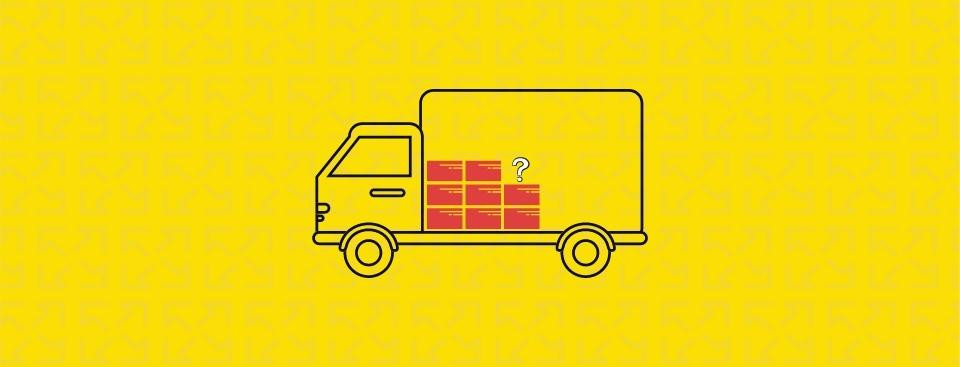Is “Just-In-Time” Past Its Prime?

As more and more brands emerge in the age of DtC e-commerce, the competition keeps getting stiffer. So when it comes to storing inventory, the most efficient thing to do is to keep only what you need on hand, ordering new things as the need arises. You might have heard this method referred to as “just-in-time” (JIT) or “lean.”
In recent years, it’s become a popular method of inventory management — and for good reason. Decreased costs and higher warehouse efficiency sped up JIT’s adoption, and soon enough brands around the world implemented it.
Then September 2021 came around. Global supply chains saw continued shocks from all directions, and companies of all sizes — especially those using lean inventory management — were faced with uncertainty. If a supplier in China shut down over a new Covid case, your entire method of keeping goods flowing came to a halt overnight.
With the potential for savings and efficiency comes serious risks — and that’s the name of the game where JIT is concerned. So how did this model become commonplace in supply chains, and how is the pandemic changing the scene?
First, let’s take a look at what the just-in-time model is and its origins.
The origins of Just-In-Time
Although it’s currently in fashion for e-commerce brands, the just-in-time model has existed for decades. Industries from auto to tech manufacturing have been using the method — which was originally popularized at Toyota in the 1970s — to lower costs and cut down on waste.
You may see just-in-time compared to another style of inventory management, ‘just-in-case.’
Just-in-case (JIC) is based on keeping extra inventory on hand just in case something goes awry, whereas just-in-time (JIT) means that firms only order and receive inventory as needed.
Championing efficiency seems like an obvious choice to make money and cut down on waste. But this efficiency comes with one major caveat: you have very little wiggle room.
For an e-commerce company, a lack of wiggle room can get uncomfortable quickly. In order to get JIT right, e-commerce retailers need a few things. These include
-
Accurate inventory tracking: Inventory management software lets you see where your product is in real-time.
-
Demand forecasting: Use software to analyze your historical data and predict what demand will be in the future.
-
Market insight: What do customers want, and how might that change based on new events or tastes?
As you can see, you need to have the ability to predict your demand very well to have a chance at successfully running a lean model for fulfillment. Yet with all these extra demands, why are so many e-commerce retailers still striving to go leaner in their supply chains?
How did Just-In-Time become so popular?
The clear advantage of JIT is that it helps minimize waste, stockpiles, and all the associated costs of keeping inventory. When you only order what you need when you need it, you don’t run the risk of excess inventory, which runs up costs for businesses running on tight margins. JIT also reduces the risk of storing defective and obsolete stock — a crucial consideration when consumer demand can change overnight.
In fact, storing inventory can make up as much as half of a company’s capital investment. That alone gives a hint as to why JIT was seen by many as a solution to the high costs incurred through excess inventory.
By opting for a lean inventory management model, e-commerce retailers can invest the money that would have been put towards storing extra inventory into elements that push the business forward. Whether it’s product development or the increasingly important world of online marketing, JIT can be a convenient way to free up budget space.
But as of 2020, the entire model has come into question.
Did the pandemic spell the death of Just-in-Time?
In any industry, it’s tempting to sacrifice resilience for lower costs in the short term. Especially when the components you deal with are bulky or expensive, it feels like an obvious choice to only order and produce exactly what you need, right on time.
But as we now know, things don’t always go as planned.
The Covid-19 pandemic meant stop-and-start shutdowns, prohibitively high costs for container space, and port closures worldwide — in turn exposing the vulnerabilities of the JIT model. At the height of 2021’s supply chain disruptions, shipping times from China to the US reached 70-plus days. Whether it was automakers stalled due to semiconductor shortages or empty toy shelves during the holidays, no one was insulated.
So how can growing brands navigate these newfound risks while making the most of the boom in online shopping? It all comes down to your tolerance for risk and maintaining visibility over your supply chain.
How do you form the right inventory management strategy? Seek out the experts
Though there’s no ‘one-size-fits-all’ way to manage the flow of your brand’s product, it’s crucial to assess your business’s goals and tolerance for risk.
The best way to form a strategy is to speak with an outside party for an objective view on what makes sense for your business’s unique profile. By teaming up with a trusted partner who can assess your current situation and put together an adaptable plan for you, you’ll have the power to keep evolving.
At CBIP, our experienced team can work together with you to do just that. With our industry experience and vast network of partners, we provide you with a custom-made plan to streamline your supply chain. But that’s not all — we also offer expert advice on how to navigate today’s unpredictable logistics environment.
Get in touch today to speak with one of our experts. We’re ready to help bring your inventory management into the future.






